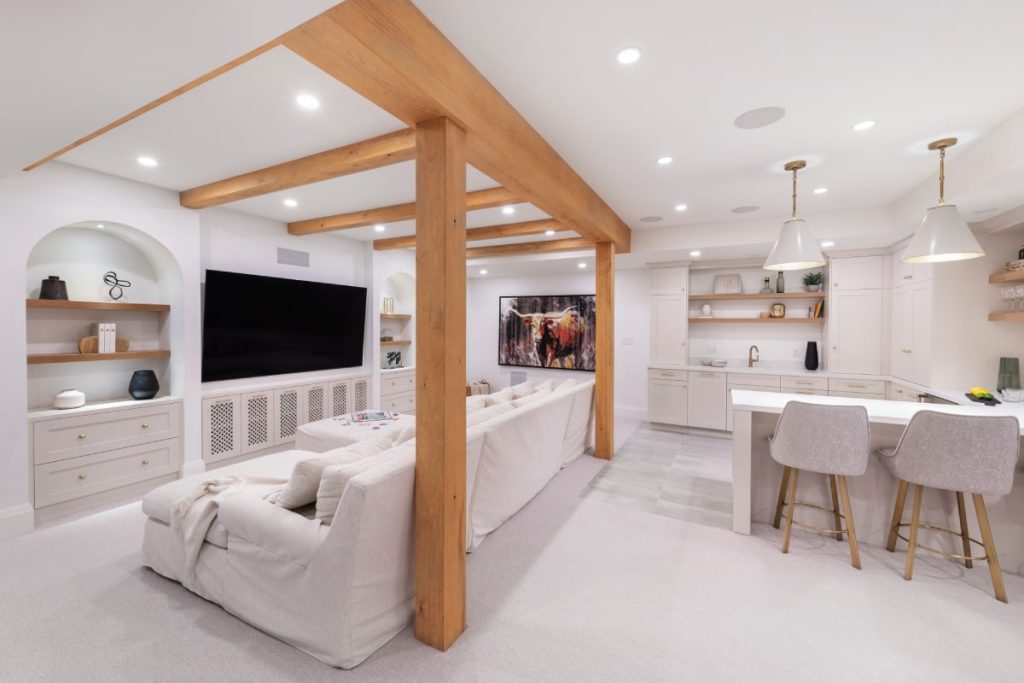If you can dream it, we can build it!
From custom bookcases to wine storage, from entertainment centres to workspaces, we can do it all! If you’re ready to get started, book a free consultation with one of our designers and share your vision.
If you’re in the process of renovating or building your home, you’ve likely come across the term “millwork”. Maybe you’ve heard it when discussing kitchen and bathroom cabinets, or in reference to any custom project, you might be considering.
But what does it really mean? And who do you ask to get millwork done?

Belyea Basement Bar & Rec-Room

Oasis 2024 CHEO Dream Home Credenza, Storage & Fireplace Wall

Potter’s Key 2019 CHEO Dream Home Transitional Laundry Room

Oasis 2024 CHEO Dream Home Mudroom

Bridgeport 2017 CHEO Dream Home Laundry Room

Equestrian 2023 CHEO Dream Home Laundry Room

Equestrian 2023 CHEO Dream Home Basement Bar and Mudroom

Madhu Laundry & Bedrooms

Green Bay Laundry Room

Brophy Laundry & Mudroom

Cambria Laundry & Mudroom

Beach Laundry Room
What is Millwork?
To put it broadly, millwork involves any material built into your home that was produced in a sawmill. Traditionally, this would only include materials made from raw lumber, though with the advances in materials and technology, this limitation doesn’t really apply anymore.
Millwork is typically more decorative than structural. Think of elements such as trim, custom cabinetry, doors and doorframes, windows and window frames, wall paneling, stairs, and mantelpieces.
While most builders use mass-produced millwork, there are plenty of homes with custom millwork projects, such as custom kitchens or bathroom vanities with fully custom cabinetry.
Millwork can include products made from all types of wood (including pine, oak, fir, poplar, and maple), but can also include products made from MDF, aluminum, and steel.
Custom Millwork vs. Casework
While you’re researching your home’s projects, you’ll come across a lot of woodworking terms. To make sure you and whatever professionals you’re working with understand each other, it’s important to ensure that you’re using the same language.
Not all products that are made in a sawmill qualify as millwork. Flooring, for example, is its own category of product. Casework is another distinct category, though it can fall under the umbrella of custom millwork.
As mentioned, custom millwork can refer to any products built into or attached to your home, such as:
- trim
- custom cabinetry (including doors)
- moulding
- wall paneling
- mantels or floating shelves
- decorative elements
Casework specifically refers to the boxes used for storage. This includes:
- cabinetry (not including doors)
- cupboards
- wood furniture (such as bathroom vanities or nightstands)
- display cabinets
- drawers
- built ins (such as bookshelves or entertainment centers)
Just like millwork, there’s a range of uses, sizes, and characteristics to casework.
However, due to its generally standard dimensions and shapes, and the fact that it’s common to all home designs, lots of casework is able to be mass-produced. This helps lower the overall cost and makes it easier to install these pieces.
Though, of course, there are manufacturers (such as Laurysen) that are able to make custom casework pieces. It all depends on your budget and the type of project.
Types of Millwork
Millwork is a very broad term for a wide array of products. You’ll find there are endless options for style, so take the time to look through pictures of what will work best in your home.
Here are a few of the most common types of millwork.
- Moulding: trim used as a transition between two elements. Moulding can frame doors, provide a visual transition between walls and flooring, or be used to frame out wall paneling.
- Casing: used to cover the unfinished gap between walls and a door or window frame.
- Baseboard: Used to trim walls and flooring. Often 3-5 inches in height, with typically simply styling.
- Crown Moulding: Crown moulding is found where the wall meets the ceiling, to hide uneven surfaces and also provide visual interest. Typically more intricate than baseboards, and can also be referred to as cornice moulding.
- Rails: Functional moulding that is used to protect walls, delineate different types of wall coverings, or highlight design elements. Chair rails (found on the lower half or below of the wall) protect walls from being damaged by furniture, and picture rails (found on the upper part of wall close to the ceiling) allows artwork frames to be hung without driving nails directly into the wall.
- Batten: Also called board-and-batten, this is a wall trim piece that is traditionally used to hide the joint between two pieces of panelling. It makes for a gorgeous design feature, and many people install batten on walls that don’t have anything to hide!